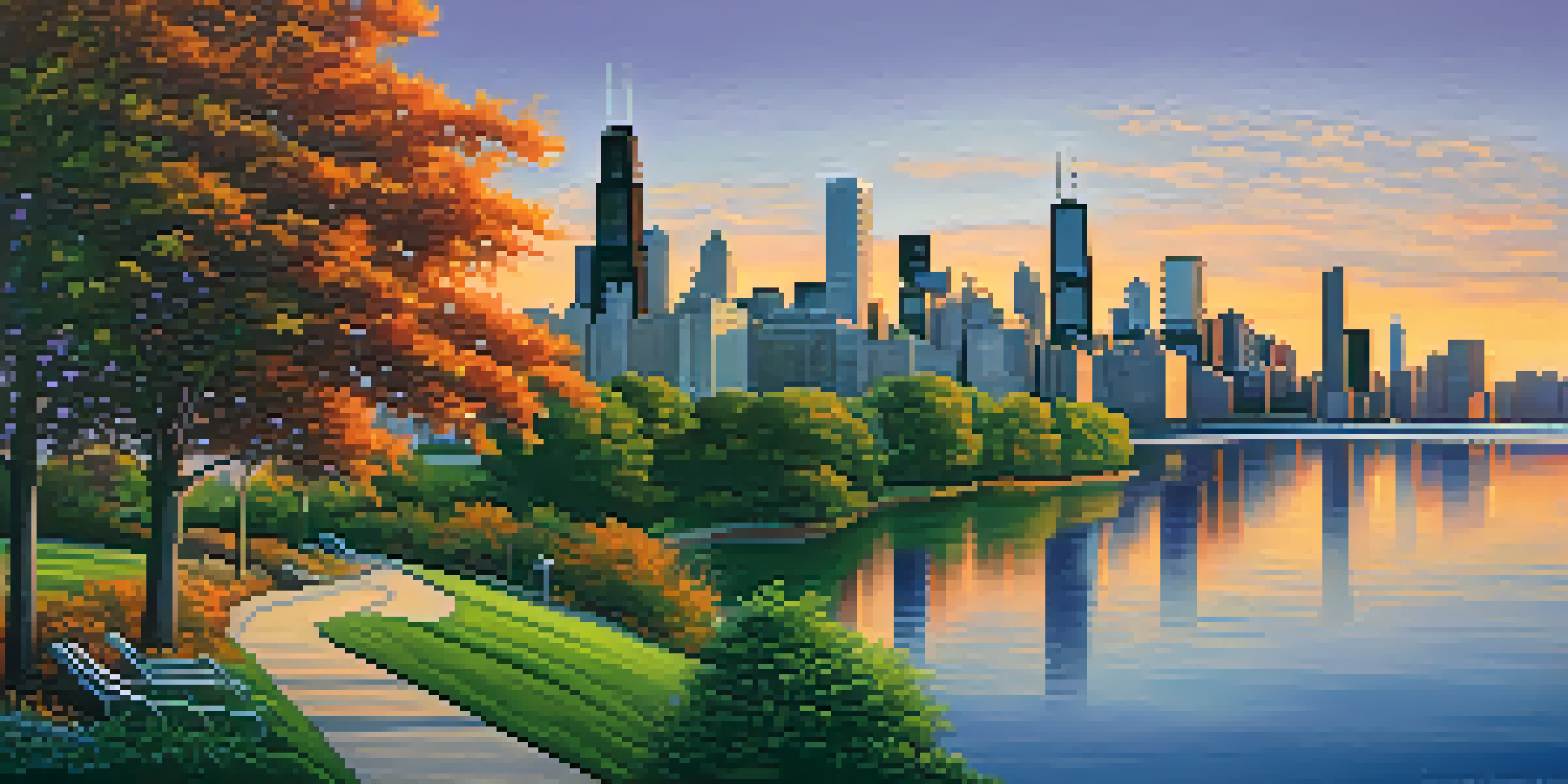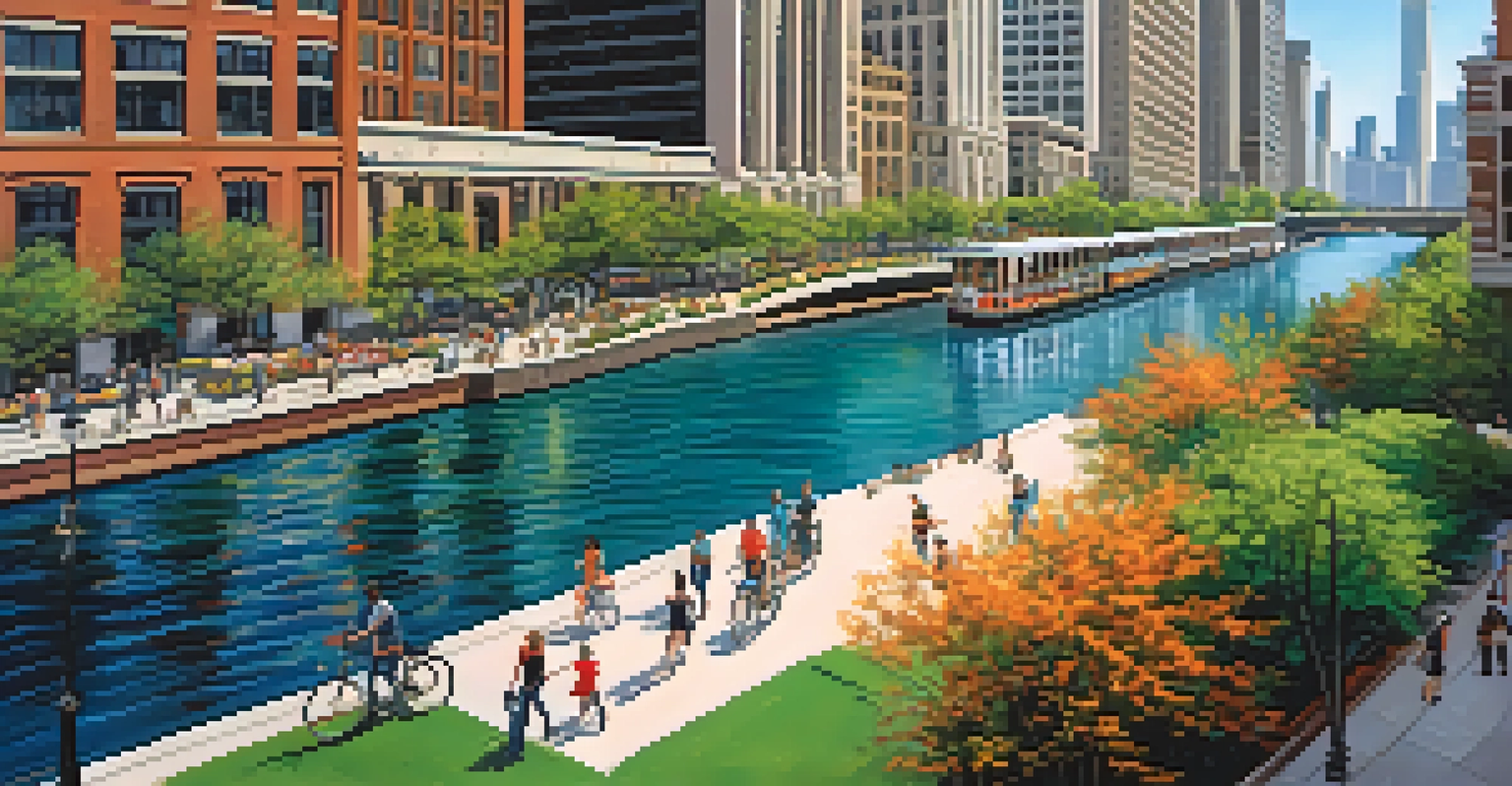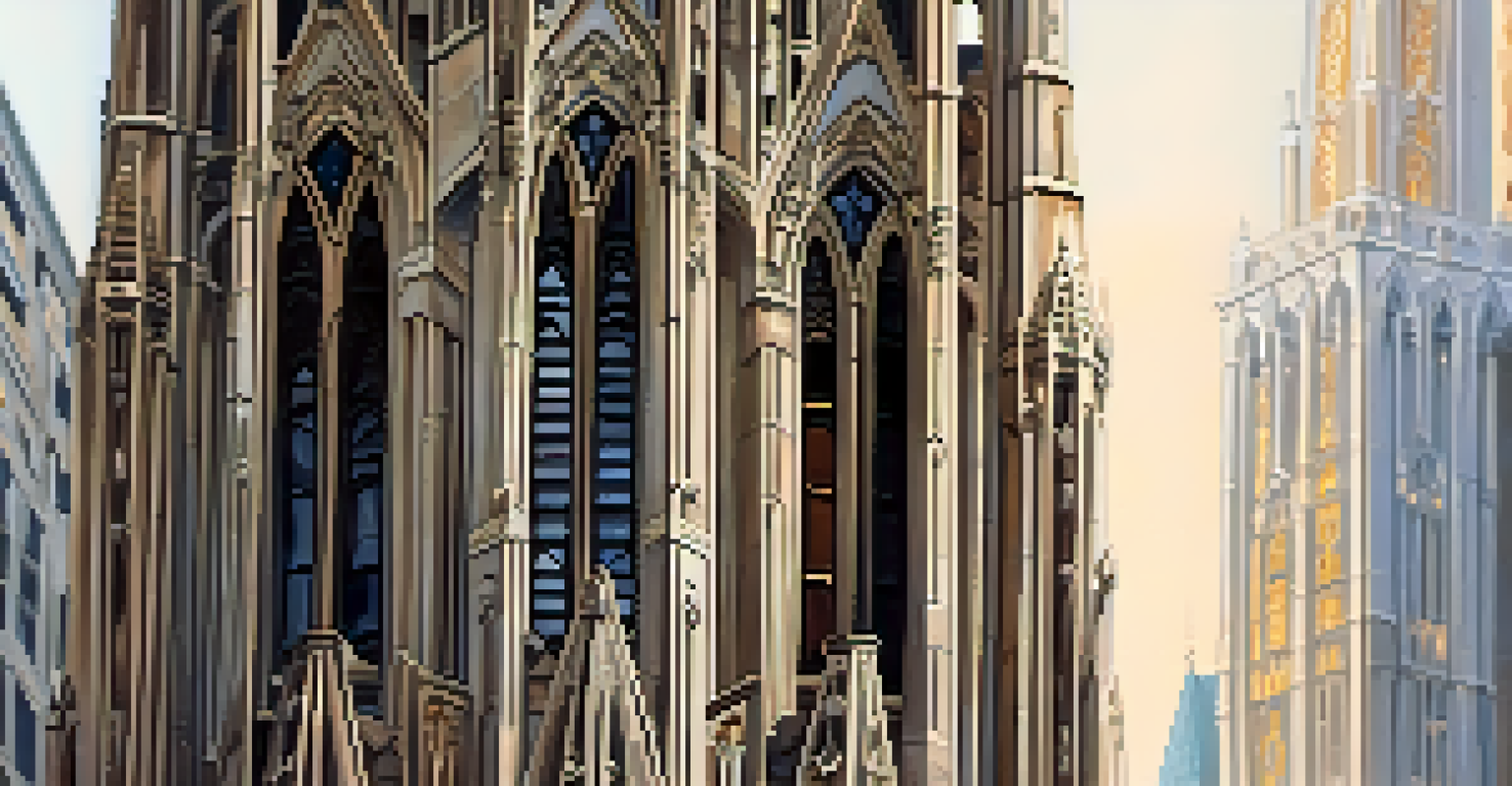The Evolution of Chicago's Skyline: A Century of Change

The Birth of a Skyline: Early 20th Century Chicago
At the turn of the 20th century, Chicago's skyline began to take shape, marked by the construction of the first skyscrapers. Buildings like the Monadnock and the Auditorium Theatre showcased architectural innovation and set the stage for future developments. This era was characterized by a sense of ambition and resilience, as the city rebuilt itself after the Great Fire of 1871.
Chicago is an October sort of city even in spring.
Architects like Louis Sullivan and Daniel Burnham were pivotal in this transformation, introducing the concept of the skyscraper as a symbol of modernity. Their work not only defined the architectural landscape but also reflected the city's aspirations for growth and progress. The skyline was beginning to reflect the bustling urban life of Chicago.
As these early skyscrapers rose, they not only changed the physical landscape but also influenced the social dynamics of the city. New office spaces attracted businesses, which in turn drew in workers from various backgrounds, creating a vibrant, diverse urban community. This foundational period laid the groundwork for what was to come in the following decades.
The Roaring Twenties: A Time of Ambitious Designs
The 1920s was a decade of economic prosperity and architectural experimentation in Chicago. This era saw the rise of iconic buildings like the Tribune Tower and the Wrigley Building, which introduced a blend of Gothic and Art Deco styles. These structures were not just functional; they were designed to inspire awe and reflect the wealth of the city.

During this time, Chicago's skyline began to gain national recognition, with its buildings standing as symbols of American ingenuity. The skyline was becoming a canvas for creativity, showcasing the talents of architects like Hugh Ferriss, who envisioned the city as a shimmering metropolis. This bold vision resonated with the public and fueled a desire for even taller, more impressive structures.
Chicago's Skyline Reflects Resilience
The evolution of Chicago's skyline showcases the city's ability to adapt and thrive through economic challenges and architectural innovations.
As the city embraced this architectural renaissance, it also fostered a sense of pride among its residents. The skyline was no longer just a backdrop; it had become a part of Chicago's identity. This shift marked the beginning of a love affair between the city and its towering structures that continues to this day.
The Great Depression and Its Impact on Urban Growth
The Great Depression brought a halt to many construction projects in Chicago, casting a shadow over the skyline. With the economy in turmoil, the ambitious plans for new skyscrapers were postponed, and many workers faced unemployment. However, despite these challenges, some significant buildings were still completed during this time, such as the Merchandise Mart, which showcased a new approach to commercial space.
The skyscraper is a tool for the city, a way to have a larger footprint in a smaller place.
This period also highlighted the resilience of the city and its inhabitants. Chicagoans found innovative ways to adapt, and the skyline, while not expanding dramatically, continued to evolve. The architecture from this era reflected a more pragmatic approach, focusing on functionality and efficiency rather than sheer height or extravagance.
Interestingly, the skyline's stagnation during the Depression set the stage for a post-war boom. As the economy began to recover, there was a renewed interest in urban development, leading to a resurgence of construction and architectural innovation in the following decades.
Post-War Boom: Renewed Ambitions and Iconic Structures
The post-World War II era marked a significant turning point for Chicago's skyline, as the city embraced modernism and a new architectural language. The construction of the Seagram Building and the John Hancock Center during this period reflected a departure from traditional styles, emphasizing sleek lines and glass facades. These buildings not only transformed the skyline but also redefined urban architecture across the country.
This newfound boldness extended beyond just height; it was about creating spaces that fostered community and engagement. The Chicago skyline became a symbol of optimism and progress, attracting both residents and tourists alike. The introduction of public spaces, like the Chicago Riverwalk, further enhanced the relationship between the city and its skyline.
Architectural Innovation Through Decades
From early skyscrapers to modern designs, Chicago's skyline highlights a continuous journey of creativity and ambition in architecture.
As the skyline continued to evolve, it became a reflection of the city’s identity and aspirations. The juxtaposition of historical buildings with modern designs illustrated Chicago's unique blend of tradition and innovation, captivating the imaginations of architects and visitors from around the world.
The 1980s and 90s: A Skyline of Contrasts
The 1980s and 90s brought a wave of new skyscrapers that further diversified Chicago's architectural landscape. This era saw the construction of the Willis Tower (formerly Sears Tower), which became an emblem of the city’s skyline. The building's unique postmodern design and its height made it a defining feature of Chicago’s urban identity.
During this time, there was also a push for more environmentally conscious designs. Architects began to explore sustainable building practices, leading to the construction of energy-efficient skyscrapers that would blend with the urban environment. This shift not only changed the skyline aesthetically but also reflected a growing awareness of environmental issues.
As Chicago's skyline expanded, it also started to tell a story of resilience and adaptability. Each new building brought a new narrative, showcasing the city’s ability to embrace change while honoring its rich architectural history. These contrasts became a hallmark of Chicago’s skyline, symbolizing the city's dynamic spirit.
21st Century Innovations: Redefining the Skyline
Entering the 21st century, Chicago's skyline has continued to push boundaries with innovative designs and cutting-edge technologies. The Aqua Tower, with its flowing balconies and green features, exemplifies how modern architecture can harmoniously integrate with nature. This building not only adds to the skyline but also promotes sustainable living in an urban setting.
Moreover, the rise of mixed-use developments has transformed the way people interact with the skyline. Buildings like the Vista Tower are not just about height; they incorporate residential, commercial, and recreational spaces, creating vibrant communities within the urban fabric. This trend reflects a shift toward more holistic urban planning.
Cultural Icon of Chicago Life
The skyline serves as a cultural symbol, representing the spirit, history, and identity of Chicago while attracting millions of visitors.
As Chicago looks toward the future, its skyline is poised for even more transformation. With ongoing projects and innovative designs, the city continues to embrace change while staying true to its architectural heritage. The skyline remains a testament to the city’s resilience, creativity, and vision for the future.
The Skyline as a Cultural Icon: More Than Just Buildings
Chicago's skyline is not just a collection of buildings; it represents the city’s cultural identity and historical journey. Each skyscraper tells a story, from the early ambitions of the 20th century to the modern innovations of today. This skyline has become a backdrop for countless events, celebrations, and cultural moments, ingraining itself into the fabric of Chicago life.
Moreover, the skyline plays a vital role in shaping the city's image on the global stage. It attracts millions of tourists each year, eager to experience the architectural marvels and the vibrant culture that Chicago has to offer. The skyline has become synonymous with the city itself, representing its spirit of resilience and creativity.

As Chicago continues to evolve, its skyline will remain a vital part of its narrative. The ongoing dialogue between past and present, tradition and innovation, ensures that the skyline will always be a source of inspiration and pride for its residents and a point of fascination for visitors from around the world.